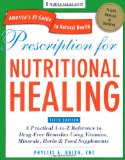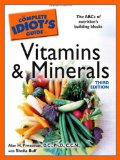|
Vitamin E is an antioxidant that protects polyunsaturated fatty acids from oxidation in the cell membranes.
Vitamin E: In-depth
Vitamin E (Tocopherol) is the generic term for a group of fat-soluble vitamins which act as antioxidants.
Vitamin E is synthesised only in plants. Plants synthesise vitamin E in order to protect themselves from free radicals which are formed during normal metabolism. The vitamins, which are obtained through the nutrition of the plants, have exactly the same function as a protective system in plants as they do in animals and humans against free radicals. The vitamin E stored in the cell membrane protects the cells by preventing the destruction of polyunsaturated fatty acids by free radicals in the cell membrane.
Oxidative processes, which are caused by free radicals, are linked to the development of certain illnesses such as cancer, arteriosclerosis (artery calcification) Parkinson's and Alzheimer's.
Vitamin E might only be synthesised by plants but it appears in all cell membranes as a fat-soluble vitamin so that even animal fats can contribute to the overall human requirement of vitamin E.
The absorption of vitamin E is linked to the absorption of fats and it takes place in the upper small intestine. The rate of absorption is dependant on the dose. On average it is usually at a rate of 30%. The rate is increased by short chained fatty acids and decreased by polyunsaturated fatty acids, oxidised fats and laxatives.
The body stores about 750 mg of vitamin E in the body. Most of it is stored in adipose tissue and the liver and smaller amounts are stored in the heart, skeletal muscle, testicles and adrenal glands.
Vitamin E: Requirement, deficiency, oversupply:
Recommended intake of vitamin E according to the DGE* |
Age |
Men |
Women |
19 - 25 |
15 mg |
12 mg |
25 - 51 |
14 mg |
12 mg |
51 - 65 |
13 mg |
12 mg |
over 65 |
12 mg |
11 mg |
*Deutsche Gesellschaft für Ernährung - a German Nutrition Society
Vitamin E deficiency symptoms are extremely rare in healthy people. Vitamin E deficiencies are very difficult to prove in human beings.
A vitamin E overdose is possible so exercise caution if self-medicating. In principle, vitamin E is not a toxic substance. Nevertheless a long term intake of high doses can lead to an accumulation in the blood plasma. Side effects as a result of an overdose are muscle weakness and fatigue.
Vitamin E should generally not be taken in large quantities over a long period of time in order to avoid unwanted interactions with other fat-soluble vitamins.
The body needs a sufficient amount of zinc in order to absorb vitamin E. Synthetic iron supplements can inhibit the absorption of vitamin E.
It is often discussed whether a considerable increase of vitamin E (75-100mg) is connected to a decreased risk of getting certain types of cancer, artery calcification, stroke and cardiovascular diseases.
top  |
Vitamin E in food
Vegetable oils such as wheat germ, corn and sunflower oil are particularly rich in vitamin E. However the high content of unsaturated fats also leads to a higher vitamin E requirement. Therefore certain types of vegetables such as kale, salsifies or sweet peppers are better sources of the vitamin. Vitamin E is also found in nuts, whole wheat products and eggs. The amount of vitamin E in animal products is dependant on the diet of the animal. In general, the animal sources of vitamin E are fairly poor.
Vitamin E in 100 g food:
Wheat germ oil: 185.0 µg
Sunflower oil: 50 µg
Almonds: 25.2 µg
Sunflower seeds: 21.8 µg
Margarine: 13.6 µg
Crisp bread: 4.0 µg
Salsifies: 6.0 µg
Units: 1,000,000 µg = 1 g
Vitamin E can easily be broken down by light and oxygen therefore store foods in tightly sealed containers away from direct light.
top 

Prescription for Nutritional Healing, Fifth Edition: A Practical A-to-Z Reference to Drug-Free Remedies Using Vitamins, Minerals, Herbs & Food Supplements, Phyllis A. Balch CNC

Earl Mindell's New Vitamin Bible,
Earl Mindell, Hester Mundis

The Complete Book of Food Counts, 9th Edition: The Book That Counts It All

The Complete Idiot's Guide to Vitamins and Minerals, 3rd Edition, Alan H. Pressman, Sheila Buff
|

